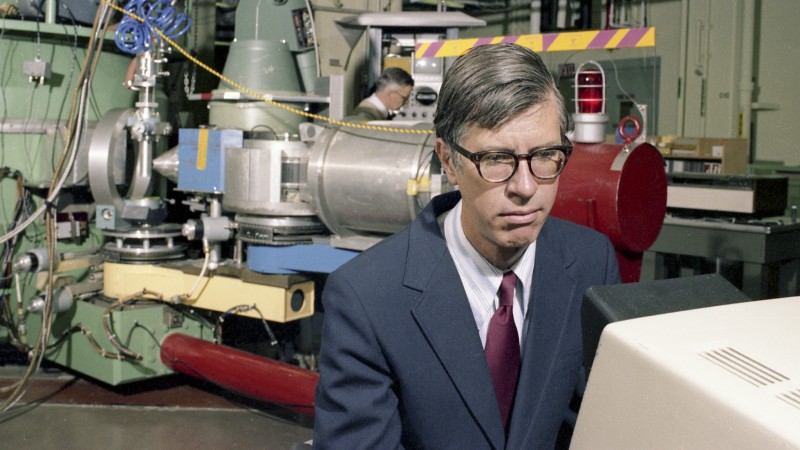Herbert A. Mook Jr., solid-state physicist and one of Oak Ridge National Laboratory's most venerable neutron scattering researchers, died Saturday, Oct. 1. He retired in 2014 as a Senior Corporate Fellow following a career that included widely cited neutron scattering investigations into superconducting materials.
"Herb was, probably more than anyone else, responsible for me deciding to come to Oak Ridge in 1998," said ORNL Director Thom Mason. "He was one of our most highly cited and respected researchers and played a crucial role in building the science case for the Spallation Neutron Source, in part through the excellence of his own science."
Herb's own career at ORNL began in 1965 when he arrived from Harvard University to perform neutron diffraction studies at the Oak Ridge Research Reactor and the High Flux Isotope Reactor. His research focused on investigations of magnetism and on superconducting materials, which conduct electricity without resistance at extremely low temperatures.
His work has contributed to the scientific enterprise to develop materials that are superconducting at higher, more attainable temperatures. He was the first to demonstrate the co-existence of magnetism and superconductivity in rare-earth rhodium borides, which brought him DOE's Outstanding Scientific Accomplishment in Solid State Physics award in 1982, and was on a team that first observed the vortex lattice in high-temperature superconducting materials.
Recognition from peers followed Herb's accomplishments. He was a fellow of the American Physical Society, the American Association for the Advancement of Science and the Neutron Scattering Society of America, which in 2010 awarded him the Clifford Shull Prize, named for his Nobel Laureate mentor and occasional collaborator.
In 2012 Herb shared the prestigious 2012 H. Kamerlingh Onnes Prize, awarded triannually for outstanding experiments in the study of superconductivity. He authored some 225 papers with at least 9,000 citations and held several patents for neutron instrumentation he developed, two of which received R&D 100 Awards.
He is survived by his wife, Jane, two sons and several grandchildren.





